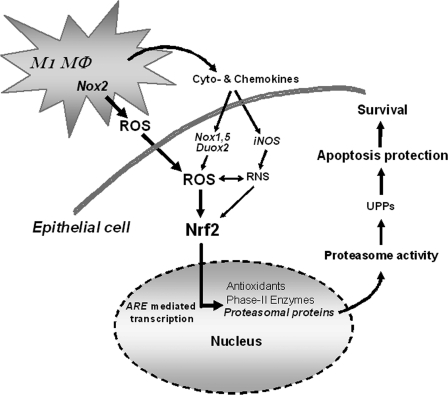FIGURE 8.
Scheme of the inducing effect of inflammatory macrophages on Nrf2-dependent proteasome activity in epithelial cells. ROS released by inflammatory (M1 polarized) macrophages directly affect neighboring epithelial cells and activate Nrf2. This is followed by activation of ARE-mediated transcription of target genes including proteasomal subunit proteins, which account for an increase of proteasome activity promoting apoptosis protection and thereby cellular survival. In addition, cyto- and chemokines released by the macrophages, as well, may induce endogenous ROS production, e.g. through Nox1 or Duox2 activation (65). Duox, dual oxidase; M1Mφ, M1 macrophage; Nox, NADPH oxidase; RNS, reactive nitrogen species; UPPs, ubiquitin proteasome pathways.

